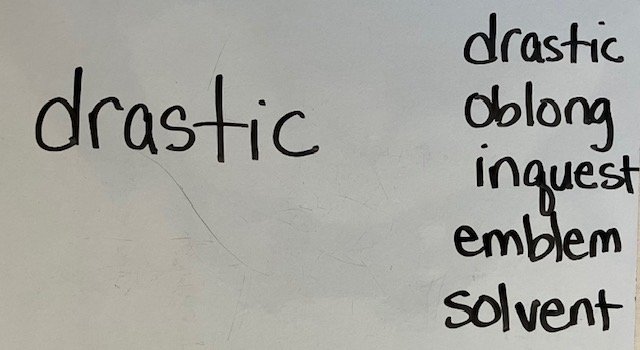Tutoring Interventions for Reading: Multisyllabic Words
A student in 4th grade is struggling to read multisyllabic words. They struggle to learn and use the patterns when reading, so they are unable to read with accuracy and fluency to understand what they’re reading (core standard CCSS.ELA-Literacy.RF.4.3.a).
What support and intervention will help this student read with increased accuracy and fluency?
Begin by identifying where the struggle begins. Review data on the student’s reading accuracy and fluency. A quick, informal assessment based on the review will help pinpoint where to start. If the assessment reveals that they are able to read multisyllabic words with short vowels (closed syllables) such as splashing, vanish and backdrop, but struggle with multisyllabic words with that include prefixes and suffixes regardless if the word has short or long vowel sounds (closed and open syllables), such as discredit, consistent, expected, contribute, expensive or restore, then I would begin with reviewing how to divide, segment, decode, blend and read multisyllabic words with short vowels and closed syllables.
Multisyllabic words for segmenting, decoding, blending and reading.
The intervention would include systematic practice of breaking down multisyllabic words with daily review. I would review the rules for dividing closed syllable words and a process for marking the word to help them visually see each part of the word. The student would practice this with different words. Sound cards can be added in to access the student’s phonological awareness and to help recognize that multisyllabic words have parts. I would not label the parts yet (prefix, suffix, root). I want the student to focus on breaking a word down, segmenting, blending, and reading it.
An example of how a multisyllabic word is marked for segmenting, decoding, blending and reading.
List 1 List 2 List 3
expect expected consistent
consistent discredit expecting
drastic intend intended
collect nostril insistent
solvent trinket trinkets
impend subjects insects
conducting impending conducting
neglect neglected neglecting
I would support accuracy and fluency by providing a word list for the student to read and sentences with the words in context. This will help build accuracy and fluency, especially if they reread the list and sentences multiple times. I would introduce cards with the word parts written on them and have the student practice combining the cards in different ways to segment, decode, blend and read those words, even if they’re fake words. This activity will reinforce breaking down and reading multisyllabic words by their parts and it will help the student become more familiar with the different types of parts. This is the point where I can ask if the student is noticing a pattern in the parts and start talking about prefixes, suffixes and roots. As the student progresses, building accuracy and fluency, I will add in other skills, such as open syllable words, new endings and prefixes and vowel teams.
Sentences:
She expected them at noon.
They insist on bringing cake for dinner.
I intend to read twenty minutes each day.
We like to collect insects.
He neglected to say that he already ate dinner.
He has a trinket from his trip.
I am worried about the impending test.
Multisyllabic word parts for manipulating and reading practice.
Students experiment with how the parts go together, which helps recognize the chunks in the word and the different parts (prefix, suffix, root).
Manipulating word parts to read multisyllabic words helps build accuracy and fluency.
One other activity that I can use to provide practice and reinforce the student’s belief that they can read these bigger words is to use a game. Games provide an engaging way to practice reading skills so it doesn’t feel like work. Next week, I’ll share a game that I like to play with students for reading.
If you have questions on what a reading intervention might look like for your child, give me a call, send an email, or submit a form using the button for a free consultation.




